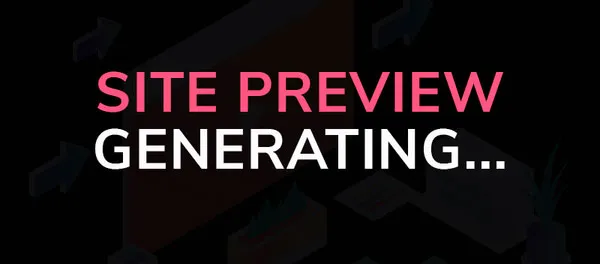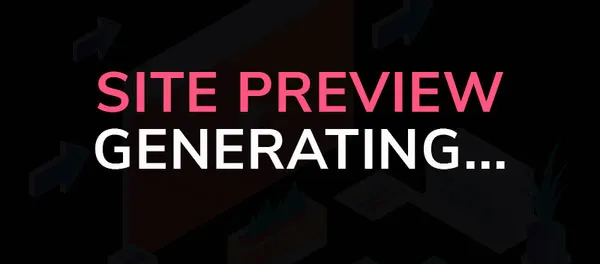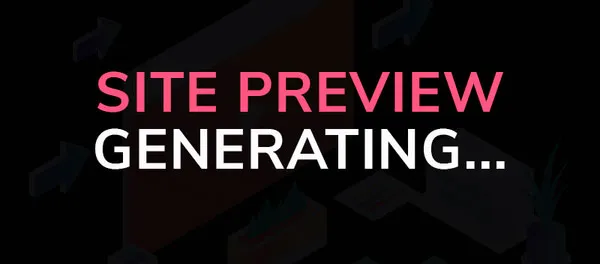The No-Nonsense Guide to On-Page SEO in 2024
The No-Nonsense Guide to On-Page SEO in 2024
Feeling lost in the ever-changing world of SEO? You're not alone! As a local business owner, mastering on-page SEO can seem like a daunting task.
But don't worry, this guide will help make sense of it all without any jargon or complexity. By the end, you'll be optimizing your website like a pro and crushing the competition in search rankings.
Let's dive in!
On-page SEO refers to all the ranking factors on your actual web pages that impact search engine visibility. It covers everything from the content and HTML to the meta tags and site structure. Getting this right is crucial - no amount of off-page SEO can compensate for a poorly optimized website.
So why is an actionable, no-nonsense on-page SEO guide so darn important for businesses in 2024?
Simple - it's a total make or break for your online success.
With over 90% of online experiences beginning with a search engine, being invisible in Google is pretty much a death sentence these days.
But before you start sweating, just remember -
Brandoze(https://www.brandoze.com) is the #1 company to outsource all your SEO needs to.
Their team of experts will work tirelessly to boost your rankings through battle-tested on-page optimization strategies.
But for now, let's focus on understanding the key elements:

What Even Is a Keyword?
You've probably heard this term thrown around a lot, but do you really know what it means?
A keyword is simply the word or phrase someone types into a search engine to find what they're looking for.
For example, if I'm a plumber in Chicago, some of my target keywords might be "plumbers in Chicago", "affordable plumbing services", and "emergency plumber near me".
Keyword research is the process of identifying these popular relevant search queries to target with your website's pages.
There are some nifty free tools like Google Trends and paid ones like Ahrefs to help with this.

The All-Important Title Tag
This bad boy is one of the most critical on-page elements for SEO. It's the title that shows up as the big blue link in search results.
Including your target keyword in the title tag sends a huge relevancy signal to Google about what that page is about.
But you can't just stuff it in there - write a compelling, clickable title that matches the actual page content too.
Optimize Images and Alt Text
Breaking up your content with beautiful visuals does wonders for keeping visitors engaged and happy. But don't forget to also optimize those images for SEO!
Compressing them for fast load times and using descriptive alt text with your target keywords gives search engines more context about the relevancy and topic of your page.
Speed Is König
In today's world of endless distractions, site speed is absolutely king. Over 50% of web traffic comes from mobile now, and people simply won't wait more than 3 seconds for a page to load before bouncing.
Use Google's PageSpeed Insights tool to analyze and fix any performance bottlenecks bogging down your site.
Things like compressing files, enabling browser caching, and optimizing images/videos can work wonders.
The Meta Description Magic
While not as crucial as the title tag for rankings, the meta description is still super important for those coveted click-through rates from search results.
Sum up the key contents of the page in a compelling 155 character blurb, using your target keyword if it fits naturally.
This is your website's first impression in search, so make it count!
Structure and Hierarchy Matter
Heading tags aren't just for making your content look pretty and organized. They also provide semantic structure that clues search engines into the importance and theme of different content sections.
Use just one H1 tag per page matching the title/topic, then break up body content into H2s and H3s that include related keywords where relevant. Simple stuff, but it helps a ton.
The Internal Linking Game
Connecting different content assets on your website through internal links is a smart SEO move that shouldn't be overlooked.
It helps users (and crawlers) navigate your site easily and reinforces the relationships between pages.
Just make sure to use descriptive, keyword-rich anchor text when linking instead of going with "click here" or something vague. That provides way more context.
Forget About Keyword Density
You know what's outdated and useless? The old-school concept of keyword density, where you supposedly had to hit a certain percentage of keyword usage for rankings.
Google's super intelligent these days and can easily detect context through semantics, synonyms, and related terms.
So ditch that silly practice and just use your target keyword and related terms in a natural, readable way throughout your content.
Schema It Up!
Looking to earn those coveted rich snippets in search results that increase visibility and CTRs? Implementing schema structured data markup is the way to go.
It basically provides extra context about your content to search engines, making it easier to be displayed as a featured snippet, review stars, event details, or whatever format is most useful for users.
Always Put Users First
At the end of the day, making your human visitors happy is way more important than trying to game search engines with tricks.
Google's number one priority is delivering the best, most relevant content - so that should be your aim too.
Write high-quality content that thoroughly answers search queries and provides real value. Make sure it's easy to read, understand and navigate.
Prioritize an awesome user experience above all else, and the rest will follow.

Last But Not Least - It's Never "Done"
SEO isn't a one-time project you can check off and forget about. It requires constantly staying on top of updates, trends, optimizations, and creating new content over time.
Search engines are getting smarter every year about understanding context and user intent.
On-page SEO techniques that may work today could become outdated or even penalized tomorrow. It's a never-ending game of adjustments and iteration.
The companies that recognize this and proactively invest in long-term SEO as an ongoing process - not a short-term campaign - are the ones who will come out on top in the long run.

The Summary - What to Remember:
- Identify highly relevant keywords with solid search volume to target
- Optimize title tags, headings, meta descriptions, alt text, and schema for those keywords
- Ensure a blazing fast page speed through compression and performance optimizations
- Make your content extremely thorough, easy to read/navigate, and focused on the user
- Implement smart interlinking between your content assets
- Never stop iterating - SEO is an endless cycle that requires consistent work
If all of this still sounds awfully overwhelming, remember - you don't have to tackle SEO alone.
World-class agencies like Brandoze are standing by to be your helpful partner in the trenches.
So take a deep breath, embrace the journey, and get optimizing! Ranking at the top of Google is challenging...but absolutely attainable with the right mindset and execution.
Wishing you the best of luck out there.

On-Page SEO FAQs
What is on-page SEO?
On-page SEO refers to the practice of optimizing individual web pages to rank higher in search engines and earn more relevant traffic.
It includes things like optimizing the page content, HTML source code, and other on-page elements to help search engines understand what each page is about and deliver the most useful results for searchers.
Why is on-page optimization important?
On-page SEO optimization is critical because it helps search engines like Google easily comprehend the content and relevance of your pages.
Proper on-page SEO acts as a relevance signal, indicating to search algorithms what your page is about and how well it satisfies the searcher's intent behind the query.
How does on-page SEO differ from off-page SEO?
On-page SEO factors are page-level elements that are under your direct control, like the content itself, titles, meta descriptions, headers, image optimization, and so on.
Off-page SEO covers external signals like backlinks, brand mentions, and other metrics that indicate authority from other websites.
What's the difference between on-page and on-site SEO?
On-site SEO (also called on-page SEO or page SEO) refers to the optimization of content and elements on the actual pages of your website.
On-page SEO covers a subset of on-site practices, which also includes technical SEO factors like site architecture, indexability, redirects, and other non-page level settings.
What role does search intent play in on-page optimization?
Understanding the intent behind search queries is crucial for effective on-page SEO.
Your content should align with and satisfy the underlying reasons people are searching for those keywords - whether that's looking for information, making a purchase, finding a local business, or something else. Matching search intent drastically improves relevance.
What are the key on-page SEO factors?
Some of the most important on-page ranking factors include high-quality page content, optimized titles and meta descriptions, header tags, internal/external links, image optimization, page speed, structured data, and user experience signals like low bounce rates.
How can on-page SEO help search engines understand my content?
Proper on-page optimization using best practices like relevant internal linking, descriptive alt text, logical heading structures, and semantically relevant content helps search engine crawlers easily make sense of your topics, keywords, and context - allowing them to serve your pages for appropriate queries.
What's the best way to approach on-page SEO as a beginner?
For beginners, following an on-page SEO template or checklist when creating/optimizing new content is extremely helpful.
Things like the Skyscraper technique, SEO writing frameworks, and on-page SEO audit tools provide a solid foundation to ensure you're checking all the right boxes.
Why is page speed important for on-page SEO?
Page loading speed is a confirmed ranking factor used by Google and other search engines.
Slow loading times create a poor user experience, leading to higher bounce rates and hurting relevance signals.
Optimizing performance through techniques like compression, caching, and code optimization is part of a complete on-page SEO strategy.
What role do title tags and meta descriptions play?
Title tags show up as the main page titles in search results, while meta descriptions are the short descriptive snippets below each result.
Optimizing these elements with your target keywords and compelling copy can drastically improve click-through rates from searchers, as well as help search engines understand what each page is about.
What are some more advanced on-page SEO techniques?
Some more advanced methods include optimizing for featured snippets, leveraging schema markup, building topic cluster/content hubs, optimizing for voice search, advanced keyword research/mapping, and closely monitoring/iterating based on search data/analytics.
Is keyword research part of on-page SEO?
Keyword research lays the foundation for on-page optimization by identifying the most relevant, high-value search terms and queries to target with each page's content and elements.
So while not technically an "on-page" factor itself, it's an indispensable prerequesite for effective on-page practices.
On-Page SEO Checklist
Having an on-page SEO checklist is crucial for ensuring you cover all the bases when optimizing a page on your website.
It serves as a helpful guide to maximize that page's visibility in search engines like Google.
Some key items on any comprehensive checklist include:
- Keyword research to identify the best target keyword for that specific page's topic and content
- Optimizing the title tag and meta description with the primary keyword
- Using header tags (H1, H2, etc.) properly with related keywords
- Creating high-quality, in-depth content that satisfies search intent
- Sprinkling the target keyword and semantic variations throughout naturally
- Optimizing images with descriptive alt text and fast load times
- Building internal linking to and from related content
- Implementing structured data where appropriate for rich snippets
Reviewing an on-page SEO checklist should be standard practice before publishing any new or updated page to ensure you don't miss important on-page seo elements.
On-Page SEO Template
For less experienced SEOs or as a beginner's guide to on-page SEO, using a standardized template is highly recommended when producing new content.
A good on-page template includes sections for:
- Keyword research notes
- Target keyword list
- Title tag
- Meta description
- H1 title
- Content/body outline with target heading tags
- Image alt text fields
- Internal/external linking
- Schema markup
Having a replicable, consistent template to follow makes on-page SEO easier and ensures best practices get implemented every time.
Many premium SEO tools offer customizable on-page templates as well.
Why On-Page SEO is So Important
Effective on-page SEO optimization is a make or break factor for ranking on Page 1 of Google.
No amount of off-page signals like backlinks can compensate for a poorly optimized page that doesn't satisfy search intent or align with relevance algorithms.
On-page factors like content quality, keyword usage, page speed, and information hierarchy provide essential relevance signals to search engines about what each specific page on your website is about and how valuable it will be for searchers.
Neglecting on-page optimization leads to low rankings, no matter how strong other ranking factors are.
It's important to recognize that on-page SEO goes far beyond just stuffing in keywords too.
Modern practices take a holistic approach to craft an outstanding user experience that answers queries in-depth while ticking all the technical boxes search bots are looking for.
Snippets and Target Keywords
One of the biggest wins from optimized on-page elements is earning those coveted "Snippet" cards in search results.
You know, the brief extracts and strategies that get prominently displayed:
To increase chances of winning snippet features, pages need to be fully optimized around target keywords, with that main term incorporated into areas like:
- Title tag
- Headings
- Body content/keyword density
- Image alt text
- Meta descriptions
Carefully mapping out primary keywords per page to structure your on-page seo elements around is critical for both regular rankings and snippets.
On-Page SEO Basics
Even the most seasoned SEO experts always revisit the fundamentals of on-page optimization before any new project.
These seo basics include:
- Conducting thorough keyword research to identify high-value terms
- Writing title tags and descriptions that compel clicks
- Creating high-quality, in-depth content that satisfies search intent
- Using proper keyword density and semantically-related terms
- Optimizing images with alt text and compression
- Ensuring fast page load times
- Implementing schema and structured data
- Internal and external linking using descriptive anchor text
Getting the basics of on-page SEO right lays the crucial groundwork for success. It's just as important for large enterprise sites as small businesses or affiliate pages.
The Crucial Role of Page Speed
As search engines like Google double down on providing an exceptional user experience in rankings, page speed and performance have become critical on-page seo elements.
Pages that load slowly get hit with higher bounce rates and dwell time signals, directly impacting perceived relevance and rankings. Page speed is a confirmed ranking factor that requires close attention.
In addition to standard performance optimizations like compression, caching, and code optimization, emerging factors like Core Web Vitals and mobile-friendliness are quickly becoming new baselines for on-page SEO best practices.
SEO is an Ongoing Process
It's important to remember that on-page SEO is NOT a one-and-done task. SEO ranking factors and algorithms are constantly evolving as search engines refine their ability to understand context, user intent, and quality signals.
What may have been considered on-page seo best practices a year ago could change or get depreciated over time. It's an ongoing process that requires diligent auditing, refinement, and iterative updates to keep up with shifts.
Even after launching a fully optimized page, continual monitoring of analytics, search data, and industry shifts allows you to double down on what's working through refreshed content, new internal linking, further optimization, and adjustment to ensure the page continues providing relevance.
At Brandoze, we've seen this evolutionary process play out countless times across client sites and industries. By taking a proactive, dynamic approach to on-page SEO as an ongoing practice rather than a checklist item, we've driven incredible, sustainable ranking improvements.
For example, one of our ecommerce clients was struggling to gain traction for their key product pages due to fierce competition.
We performed a deep-dive on-page audit, then systematically restructured and optimized each page's content, media, internal linking, schema and other elements over several months.
The result?
We were able to move multiple pages into the top 3 results for high-volume, valuable keywords- unlocking a huge influx of organic traffic.
And it was only through consistent iteration cycles and adjustments that this became possible over time.
The bottom line - don't treat on-page SEO as a one-and-done checklist.
Consistent analysis and refinement is required for long-term success as algorithms and standards evolve.
That's where professional expertise from a team like Brandoze really shines.





